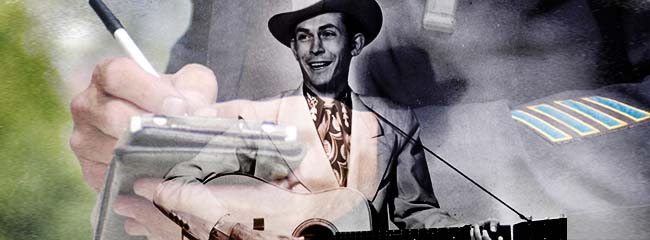That’s the title of Hank William’s 1947 hit (https://www.youtube.com/watch?v=VBAGF8Zevl8). It is also my nickname for NY’s Vehicle & Traffic Law (VTL) § 1144-a. It’s real name is the “Ambrose-Searles Move Over Act.” It governs how you are supposed to operate your vehicle when approaching a parked, stopped or standing emergency or hazard vehicle on a highway.
Hank died at age 29 from too much hard living (alcohol/drug induced heart attack). Trooper Ambrose and Deputy Searles died from bad driving. They, and many other officers in NY and around the country, were struck by passing cars during traffic stops. In response to those tragedies, NY put VTL § 1144-a in force on January 1, 2011.
If you are driving on a highway with multiple lanes going in one direction, you are required to change lanes to move away from the any emergency/hazard vehicle stopped on the side of the road with it’s emergency lights activated if you can do so safely. For full text of VTL §1144-a: http://www.safeny.ny.gov/rowa-vt.htm#1144-a
The last sentence of the statute is key. You don’t have to move over if by doing so you violate other traffic laws, including VTL §1110 (“Obedience to ….traffic control devices”) and VTL §1128 (“Driving on roadways laned for traffic”). I have never seen §1110 be an issue, but §1128 (a) often is. That is the statute which forbids you from changing lanes unless your “movement can be made with safety.” http://codes.lp.findlaw.com/nycode/VAT/VII/25/1128
The law does not require you to live a life of danger, to take a chance with every move you make (https://www.youtube.com/watch?v=6iaR3WO71j4), or to create a risk for others. If there is no safe opportunity to move out of your lane, DON’T. The officer’s safety is important, but the law doesn’t expect drivers to create hazards.
A point of contention arises when the officer disagrees with your judgment. You didn’t move over, but she thought you should have. The person sitting behind the wheel is often in the best position to assess the risks of changing lanes, the speed & position of other cars, and the spacial relationships involved. The officer standing on the roadway may not have the best vantage point. You are behind your wheel. It is your job to get home alive and not endanger others on the highway. It is your call.
If the officer’s opinion conflicts with your perception, the ticket will probably be issued. The conflict in viewpoints will be resolved in court, or, more likely, thru plea negotiations via the mail between your attorney (hopefully me) and the Assistant D.A.
A conviction for violating § 1144-a carries 3 points, a maximum fine of $275, a surcharge of either $88 or $93, and up to 15 days in jail. In my experience, jail usually isn’t a worry unless there is an injury or other extenuating circumstance.
If you can’t move over safely, slow down as much as you can. Put your flashers on and create distance between your vehicle and the officer by being as far over in your lane as possible without trespassing into the next lane. Be prepared to be ticketed if this is your only recourse. Don’t argue with the officer. If he has decided to pull you over for not changing lanes, you won’t change his mind. And, anything you say can be misconstrued, misquoted and used against you.
This law is more than 4 years old, but I still have clients telling me they weren’t aware of it’s existence. DMV rarely does a decent job of announcing new laws or educating drivers. But the police are very aware of this law. Enforcement has been zealous.
Points on your license matter. Keeping your license, maintaining a good record for insurance ratings, and avoiding DMV administrative fees should all be considered. My office is here to assist you in keeping your record as clean as possible. Safe driving.
And for some traveling music, a more rowdy version than Hank’s… https://www.youtube.com/watch?v=lAcUcPzw2Jw


A lively call to action, encouraging change or progress with a sense of urgency and enthusiasm. masonry contractors boston ma
Reply夢巴黎春藥網:https://pariss88.com/
女性催情春藥:https://pariss88.com/product-category/aphrodisiac/
女性迷幻春藥:https://pariss88.com/product-category/psychedelic/
印度正品代購:https://pariss88.com/product-category/medicine/
男性壯陽補腎:https://pariss88.com/product-category/kidney/
陰莖增大增粗:https://pariss88.com/product-category/thicken/
GB系列春藥:https://pariss88.com/product-category/aroused/
所有春藥商品:https://pariss88.com/shop/
春藥資訊:https://pariss88.com/blog/
關於我們:https://pariss88.com/about-us
Reply春藥對女性性慾望的顯著增強作用!
春藥是最受歡迎的女性催情藥物,讓愛火重燃的秘密武器!
春藥是什麼?揭開女性催情藥的神秘面紗
春藥如何影響女性性反應?揭開春藥的實際效果
春藥會讓人上癮嗎?揭開女性催情藥的真實效果與安全性
春藥效果解析:提升女性性慾與性愛滿意度的秘密武器
春藥對女性身體的深層影響:從血液循環到極致快感的全面解析
春藥的效果與作用:提升女性性慾望與性滿意度
春藥效果與作用全面解析:激發女性性慾與改善性冷淡
春藥是激發女性性慾望及提升性高潮快感的秘密武器
春藥的催情效果全解析:讓性愛更激情性高潮更猛烈
春藥效果大揭密:找回激情性愛的秘密武器!
女性服用春藥後的真實反應:從羞澀到淫蕩發騷的轉變
春藥如何幫助女性體驗激情性愛:全面指南
春藥:點燃女性激情,體驗極致性愛享受的秘訣
春藥如何通過刺激女性荷爾蒙來增強性快感?
春藥如何幫助女性找回激情性愛,享受極致快感?
春藥如何激發女性淫蕩慾望,讓女性主動求愛的?
春藥在兩性關係中起到哪些作用?解析春藥的效果
春藥在性愛中的關鍵作用:釋放女性淫蕩慾望
春藥如何讓女性淫蕩發情主動求歡:全面解析春藥效果
春藥如何幫助女性重燃性愛激情體驗美妙性高潮?
春藥的神奇效果:從淑女到淫蕩發騷的轉變
春藥的催情效果:讓女性在性愛中欲仙欲死的極致體驗
春藥的效果:激發女性性慾望的深度解析
春藥番外篇:天然春藥與合成春藥的效果對比
Reply春藥
媚藥
催情春藥
催情藥
女性春藥
春藥哪裡買
春藥推薦
春藥是什麼
春藥水
有效春藥
正品春藥
無色無味的春藥
網購春藥
進口春藥
女性媚藥
日本媚藥
日本春藥
春藥真的有用嗎
春藥有副作用嗎
催淫春藥
春藥膠囊
粉狀春藥
液體春藥
昏睡春藥
迷情春藥
迷幻春藥
催眠春藥
口交水
聽話水
乖乖水
失憶水
催情水
迷姦水
迷姦藥
迷幻藥
高潮液
催情液
春藥粉
女性發騷水
淫蕩發騷春藥
女性催淫春藥
激發女性性慾
增強性快感
增加女性主動
增加女性分泌物
增加女性敏感度
治療女性性冷淡
誘發女性性渴望
事後無記憶
迷幻催情春藥
昏睡失憶春藥
強效催情春藥
女性淫蕩發騷
女性催情膠囊
無副作用春藥
女性潮吹春藥
男女通用型春藥
催情口服液
無色無味的春藥
催情春藥水
女性催情媚藥
昏睡迷姦春藥
無色無味春藥水
超強淫蕩媚藥
女性外用春藥
刺激陰蒂快感
女性催情高潮液
女性私處高潮液
女性高潮潤滑劑
女用催淫凝膠
強效催情凝膠
發騷春藥凝膠
Reply一滴銷魂催情水:https://pariss88.com/product/tghy/
宮廷玉液催情水:https://pariss88.com/product/wdrg/
日本淑女剋星精華素:https://pariss88.com/product/ghyu/
狂愛催情水:https://pariss88.com/product/kacq/
火狐春藥粉:https://pariss88.com/product/refo/
美國卡宴春藥水:https://pariss88.com/product/rgyh/
LOVE女用催情液:https://pariss88.com/product/logd/
回春之夜:https://pariss88.com/product/hczy/
love seed催情液:https://pariss88.com/product/seyp/
Sexy性の渴慾望液:https://pariss88.com/product/sexy/
日本萌花魁:https://pariss88.com/product/mhky/
澀女郎發情水:https://pariss88.com/product/snlf/
日本Drop Girl媚藥:https://pariss88.com/product/rbdr/
紅影淫狼Wild Wolf:https://pariss88.com/product/wred/
超級金蒼蠅淫蕩水:https://pariss88.com/product/xbyk/
金蒼蠅迷情液:https://pariss88.com/product/mqyr/
印度Lovegra果凍威而鋼:https://pariss88.com/product/sgby/
蒼蠅迷魂粉:https://pariss88.com/product/cyfg/
日本性奮劑:https://pariss88.com/product/mhgy/
極上潮吹濃縮膠囊:https://pariss88.com/product/jsjn/
印度女神之戀Kiss gold:https://pariss88.com/product/nszl/
AOE愛巢發騷水:https://pariss88.com/product/aoey/
春情蕩漾迷情液:https://pariss88.com/product/cqdy/
美國強迫失身水:https://pariss88.com/product/mrgy/
金蒼蠅催情水:https://pariss88.com/product/jcys/
美國卡宴春藥粉:https://pariss88.com/product/kycq/
印度威而柔femafill-100:https://pariss88.com/product/rghm/
法國仕女亂情水:https://pariss88.com/product/fyur/
美國D水:https://pariss88.com/product/usar/
紅蜘蛛催情水:https://pariss88.com/product/hzse/
丹麥黑潮口交水:https://pariss88.com/product/dmhc/
KISS女用催情水:https://pariss88.com/product/kshj/
日本愛欲:https://pariss88.com/product/rbay/
LOVE SHOT春藥水:https://pariss88.com/product/lscy/
日本紅色H春藥水:https://pariss88.com/product/rbhs/
LOVE JUICE頂級春藥:https://pariss88.com/product/juice/
日本淫汁:https://pariss88.com/product/wedr/
日本超強淫汁:https://pariss88.com/product/rbdj/
黑寡婦性激素:https://pariss88.com/product/ygks/
Banana口交催情藥:https://pariss88.com/product/banr/
X-Ony性愛催化劑:https://pariss88.com/product/xony/
日本奇淫合歡水:https://pariss88.com/product/qyhs/
紫色綺夢口交水:https://pariss88.com/product/zsly/
西班牙金蒼蠅迷情液:https://pariss88.com/product/mqys/
Reply天使の淚:https://pariss88.com/product/tszl/
KKK3迷姦粉:https://pariss88.com/product/kytr/
SAOB強效昏睡液:https://pariss88.com/product/sabb/
嘜可奈因:https://pariss88.com/product/mkny/
Raging催情失憶水:https://pariss88.com/product/raging/
香港彼迪三唑侖片:https://pariss88.com/product/szlh/
DEEP SLEEP催眠忘情水:https://pariss88.com/product/degn/
獵艷春藥水:https://pariss88.com/product/sdaf/
乖乖水:https://pariss88.com/product/ggsw/
T2超強催眠液:https://pariss88.com/product/twer/
DDK迷姦粉:https://pariss88.com/product/ddky/
FM2迷昏粉:https://pariss88.com/product/fmsx/
惡魔丘比特:https://pariss88.com/product/emqb/
香港GHB:https://pariss88.com/product/ghby/
瀰漫之夜:https://pariss88.com/product/gtrw/
美國GHB:https://pariss88.com/product/ghbt/
美國迷情水:https://pariss88.com/product/mgmq/
美國VVK陰莖增大丸:https://pariss88.com/product/wenv/
美國GOODMAN陰莖增大丸:https://pariss88.com/product/gman/
美國MAXMAN二代陰莖增大丸:https://pariss88.com/product/maxc/
VigRX Plus陰莖增大丸:https://pariss88.com/product/vigr/
粉色佳人艾力達雙效片:https://pariss88.com/product/kista/
必利吉藍P雙效片:https://pariss88.com/product/pfjn/
印度樂威壯Levifil-20mg:https://pariss88.com/product/levi/
印度紅魔犀利士雙效片:https://pariss88.com/product/xtra/
印度超級希愛力雙效片:https://pariss88.com/product/uper/
印度必利勁(POXET-60):https://pariss88.com/product/poxe/
印度特級阿伐那非雙效:https://pariss88.com/product/lana/
犀利士5mg每日錠:https://pariss88.com/product/tada/
犀利士Vidalista 40mg:https://pariss88.com/product/vita/
印度雙效犀利士80mg:https://pariss88.com/product/supe/
印度艾力達雙效片:https://pariss88.com/product/extr/
Reply